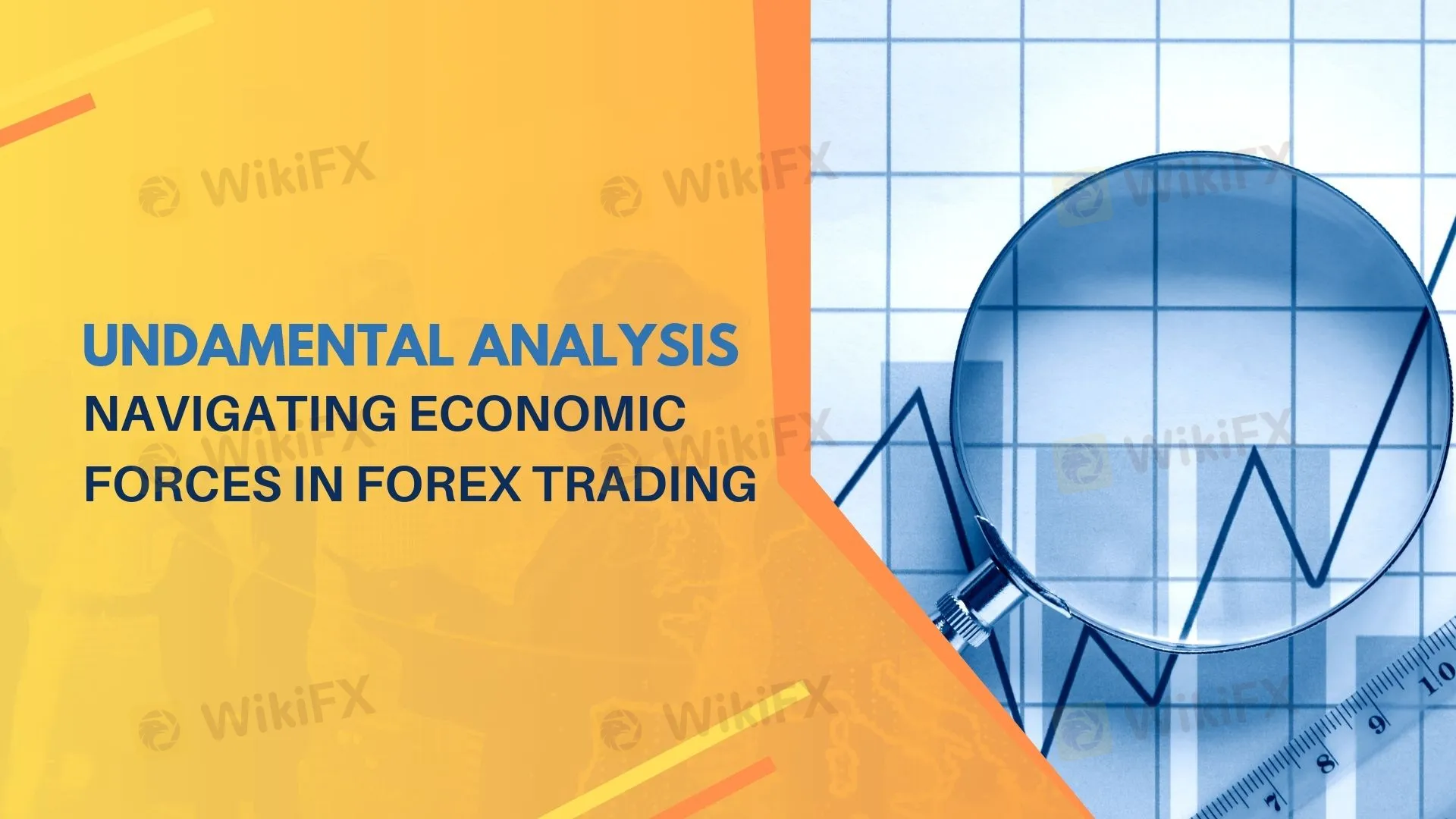简体中文
繁體中文
English
Pусский
日本語
ภาษาไทย
Tiếng Việt
Bahasa Indonesia
Español
हिन्दी
Filippiiniläinen
Français
Deutsch
Português
Türkçe
한국어
العربية
Fundamental Analysis: Navigating Economic Forces in Forex Trading
Abstract:How do global events shape forex markets? Explore how fundamental analysis reveals economic forces behind currency trends and complements technical strategies for trading success.

Fundamental analysis has been the cornerstone of trading for centuries, dating back to ancient economies. Unlike technical analysis, which emerged in the late 19th century, fundamental analysis evaluates economic, political, and social dynamics to predict market behavior. In forex trading, this means analyzing factors that drive currency values. While technical analysis focuses on price patterns, fundamental analysis uncovers the economic forces shaping those patterns.
Core Principles of Fundamental Analysis
Fundamental analysis focuses on understanding macroeconomic indicators, geopolitical events, and social developments that influence currency prices. For instance, during 2008s economic turbulence, rising oil prices caused the Russian ruble to appreciate. However, political conflicts, such as the Georgia-Russia war in August 2008, overshadowed economic factors, leading to a sell-off of the ruble. This highlights how various elements interact in shaping currency trends.
The key to successful fundamental analysis lies in refining economic data, isolating relevant elements, and constructing a broader picture for long-term strategies. Unlike news trading, which reacts to immediate events, fundamental analysis involves evaluating interrelated economic events to form a comprehensive outlook.
Applying Fundamental Analysis in Forex Trading
Fundamental analysis in forex trading extends beyond evaluating economic indicators. It considers global events, such as natural disasters, political scandals, and acts of terrorism, that disrupt currency markets. For instance, the September 11 attacks, the global financial crisis, and the COVID-19 pandemic profoundly impacted currency values and trading behavior.
Traders must integrate protective measures, such as stop-loss and limit orders, to safeguard against sudden adverse events. These safeguards are particularly vital in the unpredictable forex market, where volatility can lead to significant financial losses if unprepared.
Common Pitfalls in Fundamental Analysis
While fundamental analysis offers invaluable insights, it has its challenges:
1.Overreliance on News:
Economic news doesnt always yield predictable outcomes. Positive U.S. economic data may not necessarily strengthen the dollar, nor will negative news always weaken it. Immediate market reactions to news often cause volatility, making outcomes hard to predict.
2.Short-Term Use:
Fundamental analysis is better suited for long-term trends rather than intraday trading. Relying on it for short-term trades often results in losses due to market volatility and unpredictability.
3.Misinterpreting Indicators:
Not all positive macroeconomic reports benefit a country‘s currency. For instance, a weaker currency might boost exports, benefiting the economy but negatively impacting the currency’s value.
Balancing Fundamental and Technical Analysis
Combining fundamental and technical analysis can provide a more comprehensive trading approach. Fundamental analysis reveals the broader market direction, while technical analysis pinpoints specific entry and exit points. This integration allows traders to leverage the strengths of both methods for better decision-making.
Conclusion
Fundamental analysis remains a powerful tool for understanding and navigating forex markets. By studying economic data, political developments, and global events, traders can make informed decisions that align with market realities. While challenges exist, a disciplined approach to fundamental analysis can lead to consistent profitability in forex trading.
Disclaimer:
The views in this article only represent the author's personal views, and do not constitute investment advice on this platform. This platform does not guarantee the accuracy, completeness and timeliness of the information in the article, and will not be liable for any loss caused by the use of or reliance on the information in the article.
Read more

He Thought It Was an Investment, Now RM900,000 Is Gone
A 50-year-old man in Sarawak has lost RM900,000 to a sophisticated online investment scam.

Titan FX Launches Research Hub to Support Informed Trading
Titan FX has introduced a new Research Hub, aimed at providing traders with a centralised source of analytical tools, real-time data, and platform guidance.

MetaTrader Access Disruptions Shake Chinese Forex Traders and Brokers
Chinese MetaTrader 4 and 5 users face access issues as regulatory pressures disrupt new user connections to broker servers on these platforms.

Use Leverage Like a Pro | Avoid the Mistakes That Wipe Traders Out
In the high-stakes world of financial trading, leverage is a potent instrument that enables traders to punch well above their financial weight. By allowing market participants to control larger positions with a relatively small outlay of capital, leverage opens the door to potentially outsized returns. But it is not without peril as amplified gains also come with amplified losses, and understanding how leverage works is crucial for anyone stepping into leveraged markets.
WikiFX Broker
Latest News
Crypto News: $1 Trillion Managed Funds Fail Key Compliance Tests
No worries — You can invest with these offshore regulated brokers
He Thought It Was an Investment, Now RM900,000 Is Gone
BaFin Issues Multiple Warnings Against Unlicensed Financial Services and Identity Fraud
Disney makes hundreds more layoffs as it cuts costs
Tiger Brokers Q1 2025 Profit Soars Amid Growing Online Trading Volume
ATFX Secures Cambodia License, Boosting Forex, and Crypto Trading Growth
MetaTrader Access Disruptions Shake Chinese Forex Traders and Brokers
USD/JPY Under Pressure Again as Market Sentiment Wavers
Titan FX Launches Research Hub to Support Informed Trading
Currency Calculator


